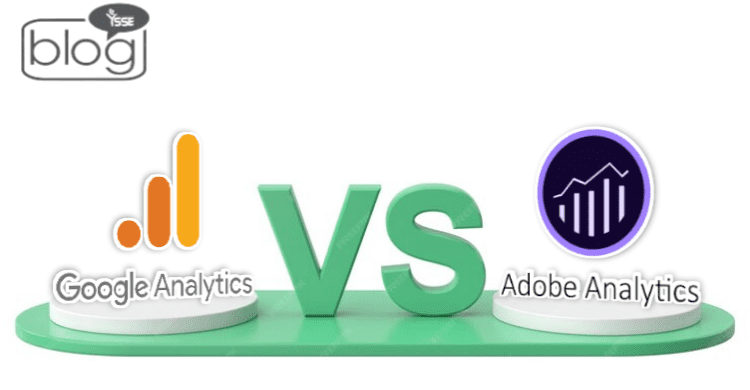In the digital age, businesses rely on analytics tools to uncover insights. Google Analytics and Adobe Analytics are prominent options for tracking and analyzing user behavior on websites. This comparison aims to explore their strengths and differences, helping businesses determine the best fit for their needs.
- User-Friendliness
- Google Analytics has garnered a reputation for its user-friendly interface. Its dashboard is designed with simplicity and intuitive navigation in mind. Users of all experience levels find it accessible, and this ease of use has contributed to its widespread adoption.
- Furthermore, Adobe Analytics is a powerful tool, but it can be challenging to learn because it has advanced features that require more time and effort to master. It’s mainly used by big companies with specialized analytics experts.
- Data Collection
- Google Analytics is a versatile data collection tool that tracks various metrics, making it an ideal choice for content-driven websites, bloggers, and small to medium-sized businesses, ranging from basic page views to advanced e-commerce data.
- Adobe Analytics is known for its robust data collection capabilities. It excels in collecting intricate and custom data, making it an ideal choice for large enterprises and e-commerce websites that require in-depth tracking of user behavior and conversions.
- Real-Time Data
- Google Analytics provides near real-time data, allowing you to monitor site activity as it unfolds. This feature is invaluable for marketing campaigns that require immediate adjustments or for keeping a close eye on the performance of live events.
- Adobe Analytics also offers real-time data, though the frequency of data updates may vary depending on your subscription level. It empowers you to respond swiftly to market changes and emerging trends.
- Customization
- While Google Analytics does offer customization options, it does have certain limitations, particularly for more complex setups. Users often find themselves employing workarounds to achieve their desired level of customization.
- Adobe Analytics offers exceptional customization, enabling the creation of customized reports and dashboards, and providing a comprehensive and detailed view of data, which can significantly benefit enterprises with specific requirements.
- Integration
- Google Analytics seamlessly integrates with other Google services, such as Google Ads, Data Studio, and Optimize. It also provides access to third-party integrations through Google Tag Manager, making it highly versatile and flexible in adapting to your specific needs.
- Adobe Analytics can be integrated with various Adobe products, creating a unified marketing and analytics ecosystem. This high level of integration is a significant advantage for companies heavily invested in Adobe’s suite of tools.
- Pricing
- Google Analytics offers a free version that caters to the needs of most small to medium-sized businesses. However, for larger enterprises or those requiring advanced features, Google Analytics 360 comes at a premium cost.
- Adobe Analytics is typically associated with a higher price point. The cost varies depending on your organization’s specific needs, making it more suitable for enterprise-level businesses with larger budgets.
- Support and Resources
- Due to its widespread use, Google Analytics boasts a wealth of support resources. You can find numerous tutorials, forums, and community support online. Google’s official documentation is comprehensive and user-friendly.
- Adobe offers extensive support for its users, including in-depth documentation, training resources, and dedicated customer support. This robust support system can be particularly crucial for enterprises with complex analytics requirements.
- Data Security
- Google Analytics follows data protection rules to provide strong security for most businesses. But, some industries with even stricter rules might need extra safety measures.
- In contrast, Adobe Analytics is renowned for catering to stringent data security and compliance requirements, making it the preferred choice for organizations operating in highly regulated environments.
This comparison of Google Analytics and Adobe Analytics offers a detailed overview of their key aspects, suggesting that a choice between these platforms depends on your specific business needs, goals, resources, and the complexity of your analytics requirements.
To read more blogs, click here.
Writer,
Sultanul Abrar Rafi
Intern,Content Writing Department
YSSE

